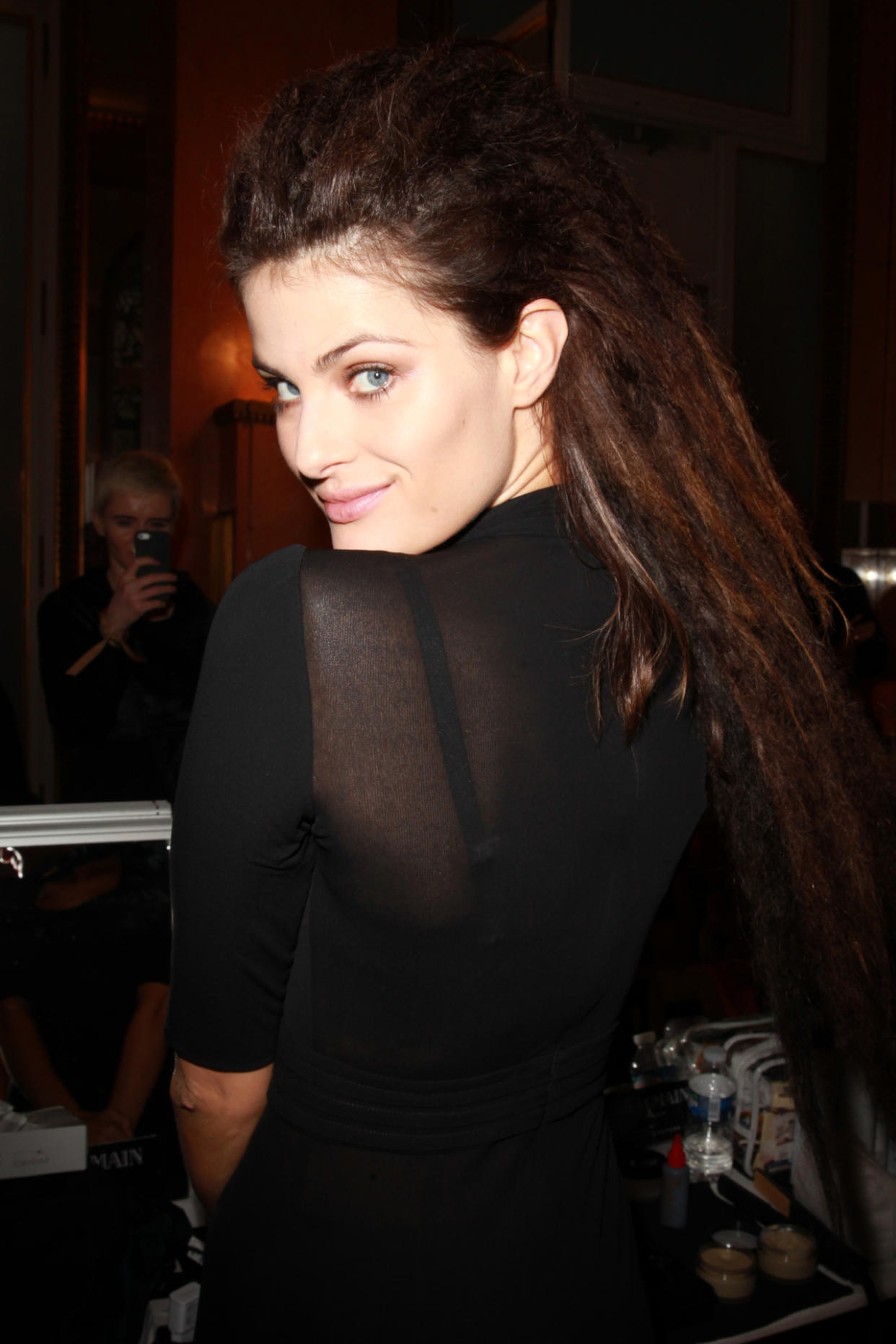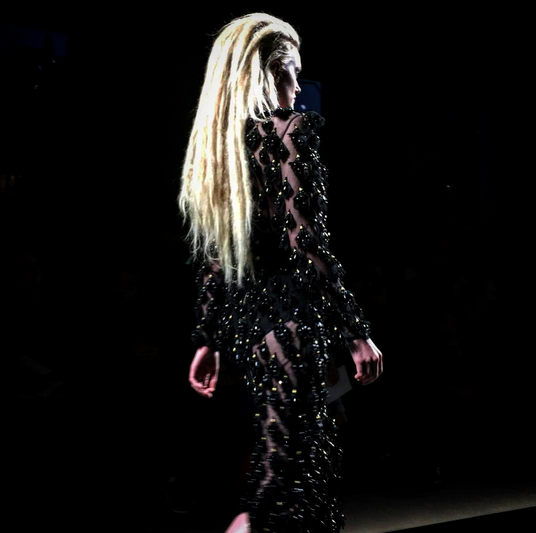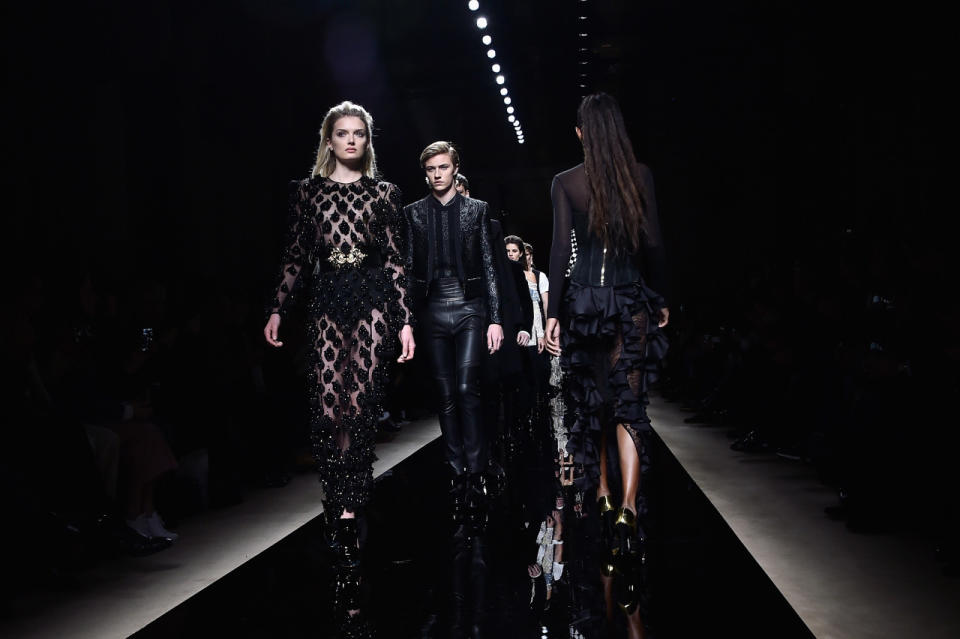Not Everyone Was Digging the Hair at Balmain’s Fall 2016 Menswear Show

Isabeli Fontana shows off her ‘do backstage at the Balmain show today. Photo: Getty
Today, Balmain showed the latest for its Fall 2016 menswear collection, which creative director Olivier Rousteing says was “inspired by a renewed appreciation of Paris’ role as the true city of light.“ Along with the structured, matador-style jackets and quilted boots, we also saw some women’s looks, which were as tasseled, ornate, sparkly and Balmain-y as you would expect. But it wasn’t the heavily-embellished fare that got a section of the internet commentariat going. It was (surprise!) the hairstyles of the female models that rubbed a few people the wrong way: Rousteing sent the ladies of his #BalmainArmy down the runway with hair styled into what looks like locs.
i-D posted an image of Lily Donaldson sporting the hairstyle during the show and their followers were unimpressed with the look, to say the least. “Cultural appropriation is not cute,” one commenter wrote. “When will the stupid fashion industry EVER learn???? This is not okay!!!!!” another very upset party exclaimed. “Love @lilymdonaldson but @balmainparis and @olivier_rousteing Please f*****g stop. The cultural background or history of dreads is not instilled in your collection. Stop.”

The offending look at Balmain. Photo: @id_magazine
It’s nothing new to see traditionally black hairstyles on the runway, especially when that runway is comprised mostly of white women. The house of Valentino recently found itself the target of criticism for its use of cornrows at its Spring 2016 runway show, which took a lot of inspiration from Africa, yet clearly not enough to have more than a paltry handful of women of African descent on their runway. Ironic, considering the house claimed that particular show was about “tolerance.” Valentino moved on to styling their models in Bantu knots (which Vogue attempted to tie to Björk instead of the African women that have been wearing the style for centuries) to showcase their collection for Pre-Fall 2016.
This brings us back to Balmain. Let’s first give Olivier Rousteing his due credit. He has been a vocal advocate for diversity in the industry, calling out his peers for their lack of vision. “Unfortunately, a lot of designers cast blonde skinny girls who have no name, because they don’t want a personality to detract from their clothes,” Olivier told Marie Claire. “They think cold is modern. For me, modern is having strong powerful girls who have something to say.”
He has time and again discussed the issue of diversity and routinely includes several people of color on the runway and in Balmain advertising. "The mixety [sic] of my castings is one of the most important things about the show,” he told the Telegraph. As for his peers who are oft reluctant to add more than a handful token brown people to their runways (or none at all), Rousting has quite the cutting criticism, telling Paper magazine that a lot of designers fail to cast models of color because “they’re not living in the real world.” Rousteing has showed us what his world looks like and demonstrated that he has an understanding that fashion is a global thing – and that should be reflected on the runway. “It’s important for me and for Balmain to show the diversity because it’s also about the luxury of communication,” he said. “And you don’t communicate for just 10 people in the room during a show; you communicate to an entire world.”

A view from the Balmain Menswear Fall 2016 runway. Photo: Getty
Still, this doesn’t mean that there isn’t room for discussion as to whether Rousteing may unintentionally be perpetuating the idea that black hairstyles, which are often deemed unattractive and unkempt on black folks, are beautiful once white people wear them. After all, out of the seven women who walked in the show, only two were women of color – it’s a discussion worth having. But given Rousteing’s consciousness on the topic of diversity and commitment to moving that conversation forward, we don’t think he was trying to whitewash a typically black hairstyle, or completely disregard its history – this case of alleged appropriation seems more nuanced and complex than say, Valentino’s.
“I decided to be a designer because I love clothes, fashion and the glamour of the fashion world. But I realized I didn’t want to just please the front row and the industry,” Rousteing told CNN. “I have the chance to express way more than that: my vision of the world and diversity. It’s always been part of my life, part of my blood and mind, but it’s a topic that you can really express when you’ve grown up and you know who you are. I want to reach people that dream big and that’s why, for me, diversity is such an important topic. It’s something that is part of me and something that I will always fight for.”
We can’t help but think that as a mixed-race black man who is so passionate about the glaring racial inequalities within fashion, the significance of locs – and the fact that many black men and women have been lambasted for wearing them – is not entirely lost on Rousteing.
Follow us on Facebook, Instagram, and Pinterest for nonstop inspiration delivered fresh to your feed, every day.

